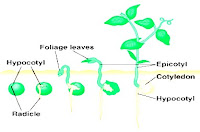loading...
Crop Improvement
Possibilities In Crop Improvement
The creation of every new superior crop variety is a definite advance in human welfare, and the breeding of new varieties is the only stable method of crop improvement. Although crop yield and quality can be improved by disease and pest control, fertilizer application, and better cultural methods, such practice must be repeated eadh season. Distribution of superior varieties as well as maintenance of seed stock by purification and field inspection are popularly regarded as phases of crop to capitalize upon the accomplishments of the crop breeder.
Possibilities In Crop Improvement
The creation of every new superior crop variety is a definite advance in human welfare, and the breeding of new varieties is the only stable method of crop improvement. Although crop yield and quality can be improved by disease and pest control, fertilizer application, and better cultural methods, such practice must be repeated eadh season. Distribution of superior varieties as well as maintenance of seed stock by purification and field inspection are popularly regarded as phases of crop to capitalize upon the accomplishments of the crop breeder.
Improvement of crops has been in progress since primitive man first exercised a choice in selection of seed from wild plants for growing under cultivation. The greatest advances were made before the dawn of civilization, but material progress was also made thereafter. However, not until the present century when some knowledge of genetic principles was acquired has crop breeding become a science with the outcome of a breeding program reasonably predictable. Much further improvement is possible by application of knowledge and materials now on hand. In fact , the only serious limitation to future progress is the failure, as yet, to find certain needed plant characteristics among the varieties being tested. A major portion of the field-crop acreage in advanced countries of the worlds is planted with improved varieties that have been developed or released since about 1920.
Objectives In Crop Breeding
A perfect crop variety is yet to be created. Every variety has several known defects that prevent production of crop of maximum yield and quality except under rare ideal conditions. The objective of the crop breeder is to eliminate those defects. Important progress in crop breeding has been made in the development of varieties of better quality that can withstand the hazard of adverse weather, diseases, insects, and unfavorable soil conditions. Most varieties have yield capacities that are ample or nearly ample for the conditions under which they are grown, so long as there is an absence of deleterious factors that restrict optimum development. Almost any adapted comercial variety is capable of producing two or more times its average yield in the United States. Increased vigor in hybrids, as manifested by greater inherent growth, has markedly increased the yields of several crops.
Some of the chief objectives in crop breeding are improvements in characteristics as follows:
1. Resistance to diseases, insects, drought, cold, heat, and alkali.
2. Adaptation to shorter seasons, longer seasons, heavy grazing, or frequent cutting.
3. Feeding quality - palatability, leafiness, hull percentage, nutritive value, and texture.
4. Market quality - higher content of textile fiber or of protein, sugar, starch, or other extractives; better processing quality for textiles, foods, beverages, and drugs; and better color.
5. Seed quality - higher or lower seed-setting tendency, greater longevity, higher viability, and larger size.
6. Growth habit - more erect or prostrate stems, more or less tillerting or branching, more uniform flowering and maturity, more uniform height, longer life, and better ratio of tops to roots.
7. Harvesting quality - stronger , shorter, or taller stalks; erect stalks and heads; non shattering qualities; easier processing and freedom from irritating awns fuzz.
8. Productive capacity - greater vigor, higher fertility, and faster recovery after cutting.
And that some explanations articles on Crop Improvement. Hopefully can improve the knowledge of the reader. . .
HAPPY LEARNING. . . .
SOURCE:
Book Principles of Field Crop Production | John H. Martin - Warren H. Leonard | COLLIER Macmillan (1967)
Book Principles of Field Crop Production | John H. Martin - Warren H. Leonard | COLLIER Macmillan (1967)
loading...
